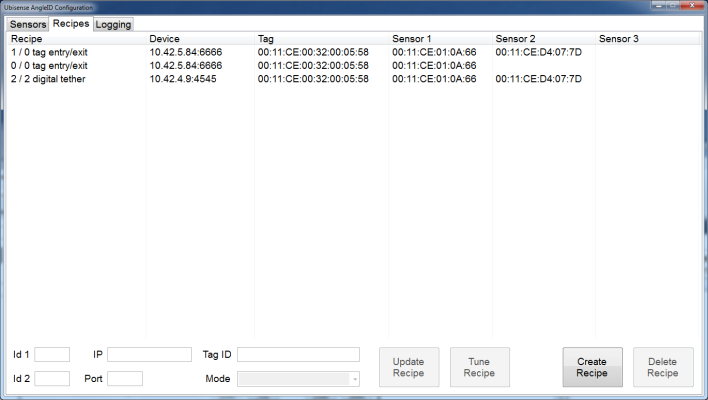Example Entry/Exit Recipes
To show the protocol operating, two separate recipes are used. The recipe definitions in following screenshot show two tag entry/exit recipes with the same first reader and the same target IP address and port number.

When you set up two or more recipes as shown, the reader multiplexes the data for all the recipes down the same TCP connection, so that the remote side can deal with multiple recipes simultaneously in one program.
The two tag entry/exit recipes have got different identifier pairs (1/0 and 0/0 respectively). This is how they are identified to the remote program.
In this case, the same reader is also involved in a digital tether recipe, which works completely independent of the two tag entry/exit recipes. You can therefore put together complex behaviors that combine digital tethering and product identification, using the same readers.
There has to be a tag specified for the entry/exit recipes, even though these recipes will detect any tag that they see. The tag specified here is the one that gets shown when the recipe is being tuned.
For information about how to implement these recipes in different types of clients, see:
|
|
